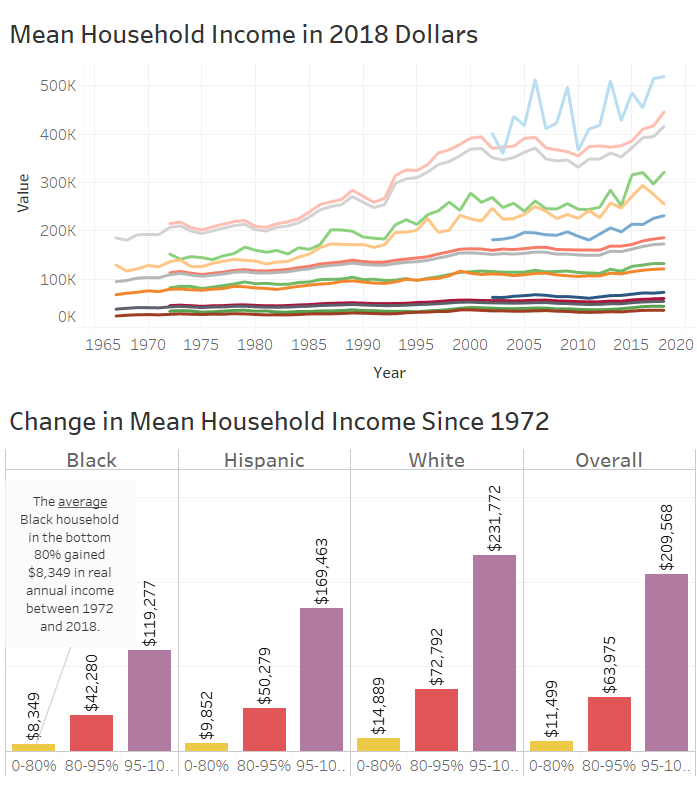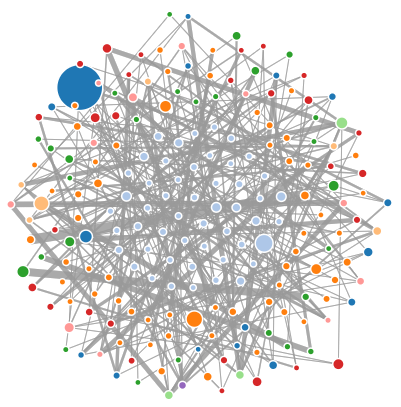
Racial Income Inequality
As of 2018, on average in the bottom 80% of households, Black households and Hispanic households respectively earned 41% and 27% less than their White counterparts. To put that in perspective, let's follow three hypothetical households from the bottom 80% -- one White, one Black, and one Hispanic -- as they each make the mean income for their racial group from 1972 to 2018. At the end of those 46 years (age 19 to 65 say), the Black household would be behind their White counterparts by $966,300 in total income (pre-tax measured in 2018 dollars), while the Hispanic household would be $702,257 short (and this completely ignores the greater opportunities for White workers to move up over time and the ability to invest the excess income, both of which would only further widen the disparity). If you click on the picture at left or click here), you can interact with this dashboard to explore the data further.
2.png)

.png)